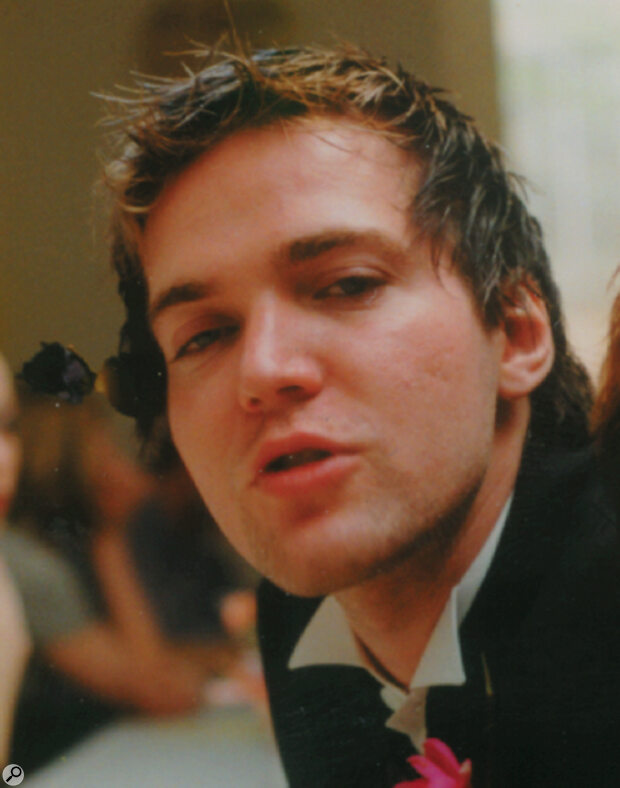Rupert Cook tells the Luddites among us to stop complaining and defragment our hard drives.
Reading 'Sounding Off' recently, you tend to get the impression that music and computers just don't mix. A typical article will read either 'I'd rather use a good old warm/analogue/2‑inch 24‑track any day than one of these new‑fangled disk things, err, but I grit my teeth, struggle with the unfamiliar, and use one anyway,' or 'I was distressed to find my Yashimoti Wanblaster soundcard only played back two and a half tracks of audio with Logic, even after de‑installing all my games except Resident Auto Theft III...'
In the first case, a seasoned 'pro' is attempting to apply the same working methods to hard disk recording that he/she would use with tape. However, this doesn't quite get explained to the supplier, and they end up installing an under‑specified system. The user is left feeling that computers and music just don't mix very well, and that they simply aren't worth all the hassle. 'If Sergeant Pepper didn't need one...' they can be heard to mutter into their pints.
In the second case, the complaints stem once again from woefully under‑specified systems. The company selling the computer or soundcard most probably doesn't know its word clock from its Wordperfect, and is still living in the dark old days of 1995, when getting more than four tracks out of a computer was considered an exotic luxury, rather like having your car talk to you. Funnily enough, it's the same computer salesmen who also have David Hasselhoff haircuts, but that's another story...
Anyway, let's put all of this behind us. 1998 is Year Zero as far as computers and hard disk recording are concerned, now that Apple have finally got their butt into gear and released the brilliant G3. It's now perfectly possible to set up a computer‑based hard disk recording system that behaves much like a 24‑track tape machine when you want it to, and much like a sequencer when that appeals. It's just a matter of planning, setting up, and spending some cash.
Here's the secret. Buy a G3, stick in more RAM than is usual (128Mb), attach a pair of big AV drives (never put all your, er, data in one basket), add 16 channels of ADAT I/O via cards, and here's the good bit — it actually works! Use a pair of ADATs or a desk with ADAT format I/O for your ins and outs, and Bob's your uncle. Add multiple outboard valve preamps for that groovy sound we all love, and no‑one can complain — compared to the cost of a well maintained 2‑inch 24‑track, you'll save at least five grand, enough money for the tape‑ and tree‑huggers to pay for a lifetime's subscription to What Classic Car magazine, with something left over for new polo‑neck sweaters. Of course, you'll still need some great mics, and don't expect to do all your effects and processing with plug‑ins for at least another year, so don't sell the PCM 90 just yet.
There's just one main rule — back up your data regularly. I don't wish to get too boring, but here's my method. I just drop the folder containing all the sound and sequencer info on to my second hard drive from time to time, backing up the project as I go. When the tunes are finished, I'll make CD‑ROMs. I'm finding that each song tends to take up about 500Mb, which means that I can back up the all the multitrack information for around 90 pence. For safety's sake, let's call it two pounds fifty and make a couple of copies and print labels. Now, I for one don't remotely believe the figures banded around for the life of CD‑R media — one earnest salesman informed me that the blank CD‑Rs he was selling would definitely hold their data for a hundred years, whereupon I expressed surprise and told him that I was unaware, up until now, that they'd made 4‑speed CD recorders in 1898. Perhaps the manufacturers were just taking a good guess at archive life. I do believe, however, that they'll last long enough for me to back up all the CD‑ROMs that I've made on to whatever format supersedes them in about five years and makes their capacity look miniscule. As a matter of interest, I've just backed up all my old high density floppies on to one CD‑R.
Done properly, therefore, you can have all the advantages of a tape‑based system (separate ins and outs, simultaneous multiple track recording, cheap media, er, that's it) with the zillion and one brilliant things that have made sequencers the tools of the modern music scene that they are. All this for a system that also plays the stress relieving Duke Nukem without messing up any of your settings, for when the might of your modern music software is rendered useless by the oldest force known to society, the crap drummer. Oh yes, and I'm writing this initially on paper whilst sitting in the garden. It's a gorgeous day and a laptop would melt. I'll leave my computers doing what they do best, recording expressive music and getting it onto CD with the minimum of fuss, so that others can hear it
Rupert Cook wears eyeliner, drives an old Capri, and loves the '90s. Contact https://web.archive.org/web/2015..." target="_top for more information.
If you'd like to air your views in this column, please send your ideas to: Sounding Off, Sound On Sound, Media House, Trafalgar Way, Bar Hill, Cambridge CB3 8SQ.
Any comments on the contents of previous columns are also welcome, and should be sent to the Editor at the same address. Email: sos.feedback@soundonsound.com

